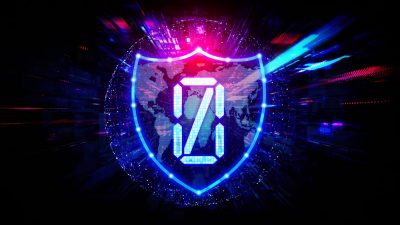Cybersecurity has existed over a decade for now and the current regulations don’t seem to define the practically secured cyber-space. Let’s go back when we first started to see computers more frequently and securing each device wasn’t a problem at that time because of limited capabilities and function of computers. Each person used the computers for the specified task and that was the end of it, users rarely bothered to try other functionalities. The regulations were limited, the employees were ordered to maintain the data privacy. Data network was vaguely built to limit data transfer and exposure.
The revolution of networking and internet bought the world a new information exchange age. The decade of the ’90s saw improvement in the interconnection between the systems this was the first time cyber regulations were laid down with the usage of the internet.
The internet access and information sharing was the first actual framework which was laid out as a regulation. Though many enterprises believed that regulations meant that the leadership cannot control the employees, so not many enterprises pursued regulations as a mandatory framework.
After almost two decades, enterprises certainly have changed their mindset with the start of malware and phishing attacks that caused financial damages. Securing thousands of computers at a time can be cumbersome. Cybersecurity became an imperative underlying concept that demanded to be utilized with better regulations and policies.
REGULATIONS CAN SLOW DOWN DEVELOPMENT
Have you ever thought why do I need to keep my password so long and use a different type of characters to keep myself safe and will it still work? It might not; when your information can be easily decrypted through different software’s. NIST stands for National Institute of Standards and Technology a federal organization has been saying that the current requirement of complex, long and frequent changes will not be needed. Despite the federal regulation the requirement of long and complicated passwords is been seen on every other website.
Bill Burr’s who had written a bible on password and how to maintain a Cybersecurity? Recently released statement stated that most of the advice given was totally no-practical-application material. His advice of using long passwords made the internet less secured with just some brute force the password will give-up.
This is the very nature of policies and frameworks that define the password system. Flexibility is another issue that has been disrupting the environment of policies. A 20 character password that is much longer compared to the short password with a mix of characters, numbers, and symbols can easily be cracked with probability and combination. Most regulations don’t care if your account actually gets locked out during the trial of passwords, when the attackers may strike with DoS attacks. This happened to many of the enterprises that later got their account being comprised and data being transferred. So account Lock-out can be a dual-edged scenario for many of the enterprises.
REGULATIONS ACTUALLY MISS THE SECURITY SCENARIO
The bigger picture is yet to be painted in terms of the regulations and framework. Around 90 percent of the malicious data breaches that happen because of two issues of social engineering and unpatched software. However, most of the current regulations and framework that are being laid out by the enterprises usually don’t relate to any of the above two topics.
Enterprises actually build thousand-page documents that deal with different scenarios but not actually applicable situations that lead to major revenue losses. So it also might be the time to adjust the regulations and see which part of your cybersecurity needs major up-gradation. Most of the current regulations and frameworks actually focus on creating steps that will lead towards following certain frameworks that can be easily targeted. So each of the situations is given equal importance making the document vulnerable in missing out certain important sections.
Most of the required information is usually buried inside the documents that become ponderous for the users to read. Regulations and frameworks have to be practically applicable to the situation when most of them are missing out.
1. Do you patch your security software regularly? OR
2. Do you update your cybersecurity training material so that all recent changes are included?
Regulations and frameworks can’t be understated but they need to define the security concern rather than a knowledge book. A protocol that needs to be followed for the scenarios that can reduce the risk of breaking the infrastructure of the enterprise in case of cyber attack.
HOW CAN ENTERPRISES REDUCE THE REGULATIONS?
Regulations, policies, and frameworks all need to be a part of your elaborate cybersecurity protocol. Each employee that comes in the enterprises should know the basic fundamental regulation that needs to be followed for marinating the security environment. It should be kind of quick guide that can read through a coffee break because most of the employees won’t be interested in the elaborate version that will bore them out.
Enterprises need to be innovative with training sessions, instead of just giving them points to note down what to do and what not to do. Give them elaborate situations where they need to find a way. It’s not that only cybercriminals can be innovative, enterprises can be interactive to train the employees. To know more about Cybersecurity, you can download our whitepapers.














